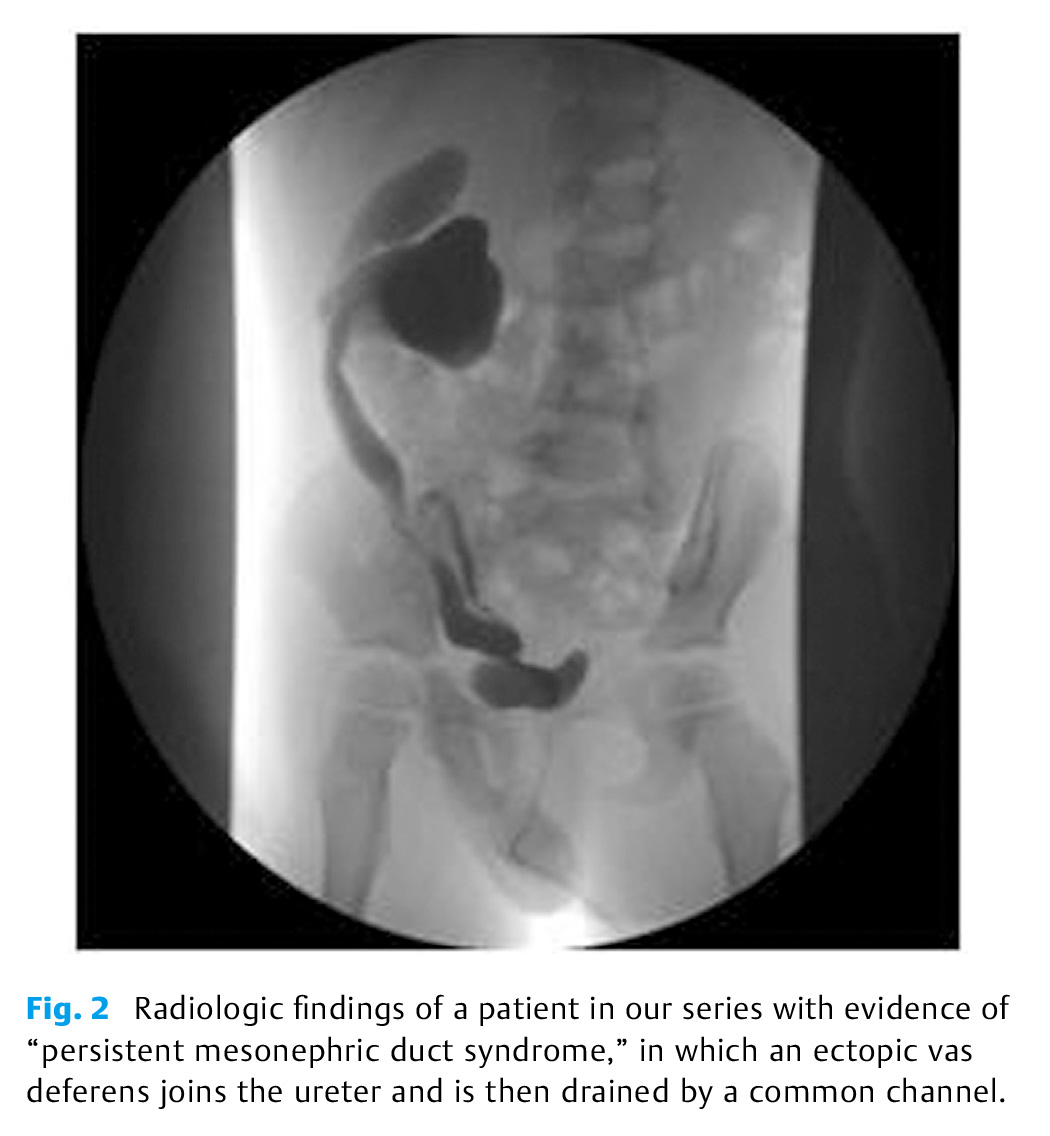
精选论文
Original Article
Morandi et al.
Introduction To investigate the current experience of the ARM-Net Consortium in the management of epididymo-orchitis (EO) in patients with anorectal malformations (ARMs), and to identify specific risk factors and the need for urological care involvement.
Materials and Methods We retrospectively collected data of EO in patients with ARM between 2015 and 2019. Data on urological aspects, ARM type, surgical approach, associated anomalies, diagnosis, and treatment of EO were collected and analyzed.
Results Twenty-nine patients were reported by 12 centers. Twenty-six patients with EO (90%) had ARM with a rectourinary fistula. Median age at first EO was 2 years (range: 15 days–27 years). Twenty patients (69%) experienced multiple EO, and 60% of recurrences were ipsilateral. Associated urological anomalies included vesicoureteral reflux (48%), urethral anomalies (41%), neurogenic bladder (41%), and ectopic vas (10%). A positive urine culture during EO was present in 69%. EO was treated with antibiotics (90%), limiting surgical exploration to 14%. Prevention of recurrences included surgery (bulking agents 15%, vasectomy 15%, and orchiectomy 5%) and antibiotic prophylaxis (20%).
Conclusion Urologists may encounter patients with EO in ARM patients, frequently with positive urine culture. An appropriate urologic work-up for most ARM patients is necessary to identify and treat underlying risk factors. A practical scheme for the work-up is suggested for a close collaboration between pediatric surgeons and urologists.

